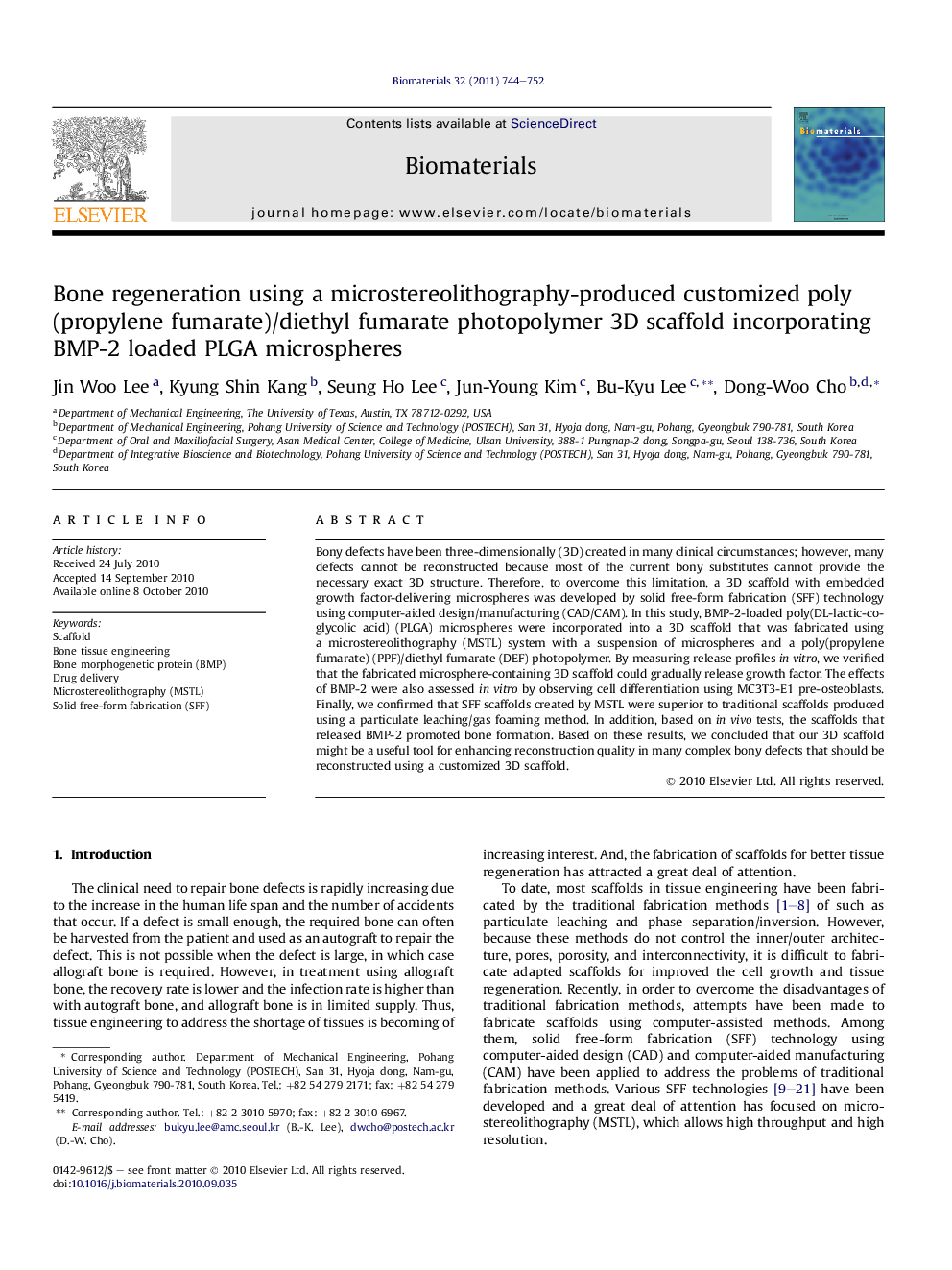| Article ID | Journal | Published Year | Pages | File Type |
|---|---|---|---|---|
| 7579 | Biomaterials | 2011 | 9 Pages |
Bony defects have been three-dimensionally (3D) created in many clinical circumstances; however, many defects cannot be reconstructed because most of the current bony substitutes cannot provide the necessary exact 3D structure. Therefore, to overcome this limitation, a 3D scaffold with embedded growth factor-delivering microspheres was developed by solid free-form fabrication (SFF) technology using computer-aided design/manufacturing (CAD/CAM). In this study, BMP-2-loaded poly(DL-lactic-co-glycolic acid) (PLGA) microspheres were incorporated into a 3D scaffold that was fabricated using a microstereolithography (MSTL) system with a suspension of microspheres and a poly(propylene fumarate) (PPF)/diethyl fumarate (DEF) photopolymer. By measuring release profiles in vitro, we verified that the fabricated microsphere-containing 3D scaffold could gradually release growth factor. The effects of BMP-2 were also assessed in vitro by observing cell differentiation using MC3T3-E1 pre-osteoblasts. Finally, we confirmed that SFF scaffolds created by MSTL were superior to traditional scaffolds produced using a particulate leaching/gas foaming method. In addition, based on in vivo tests, the scaffolds that released BMP-2 promoted bone formation. Based on these results, we concluded that our 3D scaffold might be a useful tool for enhancing reconstruction quality in many complex bony defects that should be reconstructed using a customized 3D scaffold.
